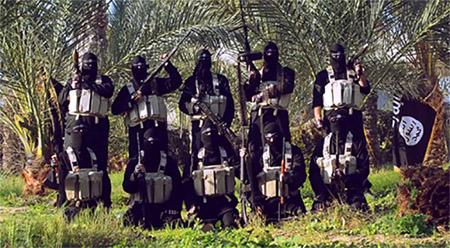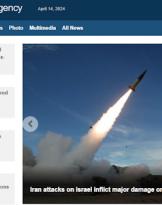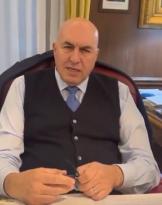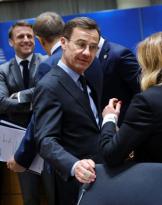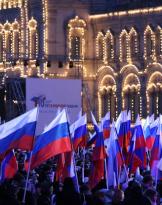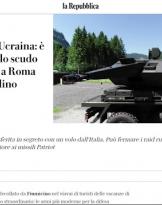Islam does not have a center, a command structure, some authority that helps the believer to interpret the sacred scriptures giving them the appropriate meaning. For this reason the contents of the Islamic sacred texts can be proposed, as happens today, in an instrumental way to justify even bloody terrorist actions, in particular through the Islamic culture centers and the mosques scattered around the world.
An action of proselytism in which Islamic Non-Governmental Organizations also play a fundamental role with the apparent aim of training operators prepared to bring help to the needy.
Most Islamic NGOs officially have humanitarian purposes. In reality, however, and in particular starting from the war in Bosnia and Kosovo, the most important ones with substantial financial resources ensured by Arab states such as Yemen, Qatar and Saudi Arabia have often proved to be the main means of spreading " in a protected way ”radical Islam, especially among the populations of developing nations where they were accredited.
Unsuspected vectors protected by the developed humanitarian mission, which have spread and spread the concepts of Islamic radicalism also in Africa, now the result of migratory flows towards the West.
Structures that, through forms of "humanitarian aid", convey money, make proselytism that very often results in a real recruitment of personnel to be set up for training camps. Realities that have distant origins, when in the 80 years the Afghan mujaheddin were prepared in Afghanistan, from which the Wahabite Bin Laden was distinguished, many of whom subsequently important fighters alongside the Bosnians in the Balkan war.
An often fundamental role is that of Islamic NGOs to facilitate the insertion in the territories in the crosshairs of radicalism of groups of dormant cells, specifically trained to carry out terrorist attacks based on input from the reference summit, generally also linked to local criminal groups from which they obtain coverage and logistical support in exchange for weapons and drugs.
Among the most controversial NGOs, investigated or accused of terrorism, for memory, we mention: the Muslim World League set up in Mecca in the 60s. After the attack on the Twin Towers in September 2001, one of its representatives, Abdul Rahman Alamoudi, was arrested for financing terrorist groups. The League is still active today with offices on five continents.
The “Al Haramain” foundation headquartered in Ryad with the main purpose of assisting Islamic communities around the world. Its name was associated with the attacks against the American embassies in Nairobi and Dar es Salaam in 1998. It is active in Somalia and was also active in Bosnia in the 90s in favor of the Afghan mujahideen battalions allied to the Sarajevo government. It was also banned by the UN Security Council.
The “Al Mouwafaq” foundation, also has its head office in Ryad. It also has various representative offices in Europe and the Balkans. The main purpose is to support Muslim refugees around the world. She was accused of ties to the Jamaat Islamiyahegiziana, financing a battalions of Egyptian mujahideen fighting in Bosnia under the name of the Mouwafaq Brigade. It has a branch in Munich, Germany, which is suspected of links to al Qaeda.
The Islamic Coordination Council founded in 1986, headquartered in Peshawar, Pakistan, and works in favor of Afghan refugees with private funding mostly from Saudi Arabia.
The International Islamic Relief Organization (Hay'at al Ighatha al Islamiyah al Alamyah), founded in 1979, has its headquarters in Jeddah with branches in 90 countries around the world. Its main purpose is to provide assistance to refugee orphans and victims of war.
As for Africa, however, another organization is very active: the agency of the Muslims of Africa. Based in Kuwait, it is no longer linked to the Wahhabi world, but to that of the Muslim Brotherhood. This organization operates and is present in 34 countries of the African continent. She currently runs agricultural projects in Mali, provides assistance to Tuareg people, offers scholarships to Islamic Africans, assists orphans, builds mosques and is suspected of financing Sheykh Hassan Dahir Aweys' Al Ittihad al Islamyah in Somalia.
The geographical dissemination of these structures, their financial resources and the capillary permeation on the territories make them the main vectors of the possible "sleeping cells" to be deployed in the countries targeted by Islamic radical formation.
Some unsuspected people are naturalized in Western countries such as the Pakistani / British authors of the London Underground bombings, others mixed among the thousands of desperate people who every day from Syria, Afghanistan, Libya and the sub-Saharan African regions reach the 'Italy and then swarm across the West.
Many speak of sleeping cells, often with a certain superficiality, both in the world of communication and above all at an institutional level. Misuse of the phrase "sleeper cell" obscures important distinctions and contributes to general confusion about the nature of the jihadist threat looming over the Western world.
In espionage terminology, a "sleeper" is an element infiltrated in society or, even, in the institutions of a state in which it operates correctly according to the lawful tasks assigned to it, remaining in "suspended" until it is activated by a predetermined signal or by a succession of events previously agreed with the "mother cell".
Dormant nuclei have been scattered around the world since the mid-1990s, when al Qaeda established a center in Nairobi, Kenya, disguising it under the guise of a charitable NGO called "Aid for Africa".
Currently, the possible sleeper cells ready to be operational are mujahideen veterans of the jihad in Afghanistan, Bosnia, Chechnya and, more recently, Somali Salafists to which are added the radical groups operating in Iraq, Yemen and Syria. Many of them with high probability, since the times of the jihad in Afghanistan and Bosnia, are part of the Islamic NGOs linked to the Maktab al-Khidmat, or MAK. Once they return to their countries of residence, they maintain their paramilitary skills and ties with the fellow soldiers with whom they fought.
Trained and experienced personnel who may also have material suitable for carrying out "unconventional" terrorist attacks, recovered from radioactive waste deposits scattered in Africa, in particular in Somalia and Tchad and aggressive chemicals that lie uncontrolled in the deserts of Libya, of the Iraq or Syria among those who escaped the UN.
Obama himself has feared this risk on several occasions. Depleted Uranium and Plutonium, waste from nuclear power plants, radioactive materials stored in deposits once managed by great nuclear powers such as the former Soviet Union and now no longer properly supervised. If mixed with conventional explosive devices they would make it possible to carry out "dirty" terrorist attacks with devastating effects on the civilian population.
A “dirty” Improvised Explosive Device (IED) would disperse into the environment radioactive powders with immediate lethal properties and capable of causing residual environmental pollution destined to last decades, or chemical or biological substances that are immediately deadly. Not surprisingly, today's news, US Intelligence issued a "Notice of Risk" on the possibility that ISIS terrorists could take action by contaminating the environment with the Ebola virus, perhaps by procuring it through Islamic humanitarian operators located in African areas where the epidemic is expanding.
Radioactive, chemical and biological material that could easily reach Europe also through well-trained migrants and inserted in the flows of the desperate who for a year have reached the Italian coast.
For now, ISIS and its caliphate speak to the West with a media approach, flaunting security in communicating their threats. All this takes place by taking up the old concepts of radical Islam: the conversion of the whole world to faith in Allah, the one God and the only Prophet. A process that has undergone an acceleration at a critical moment for the West, engaged on different fronts and in distinct and separate chessboards.
First of all the opposition with Russia which makes Russia itself less careful in controlling its allies than ever such as Syria, creating the conditions for a climate of extreme uncertainty to emerge in the East which could represent the curtain behind which to prepare extremely dangerous actions .
Terrorists ready to act or just prepared to form dormant cells have a ready and organized host substrate. The thousands of centers of Islamic culture and Mosques scattered throughout the Italian territory and throughout the rest of Europe, Islamic NGOs involved in humanitarian aid for Muslims. All well-organized structures that also refer to moderate Muslim communities, to mask their real purpose of existing.
In summary, the threat exists and it is real. From the media point of view, however, it must be managed with caution and without unnecessary alarmism to avert the danger of the collective psychosis of the Islamic danger that could lead to widespread attention rather than concentrated on the possible threat. By overestimating, however, the danger of the Caliphate, one could in fact lose sight of the signs of the preparation of terrorist acts less striking than the beheading of a hostage, but more subtle.
ISIS, now allied with Al Qaeda, is borrowing the techniques originally applied by Bin Laden and in all likelihood started projecting terrorist-trained cells, perhaps even remodeling the dislocation of the units that have been present for some time in some countries.
Keeping in mind the possible emergence of new Islamic NGOs around the world or the issuing of those already operating, could be an important indicator to prevent the threat.
Fernando Termentini

